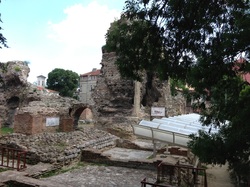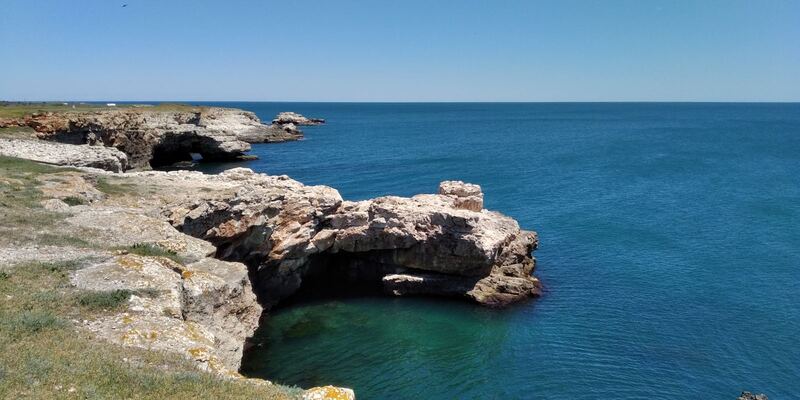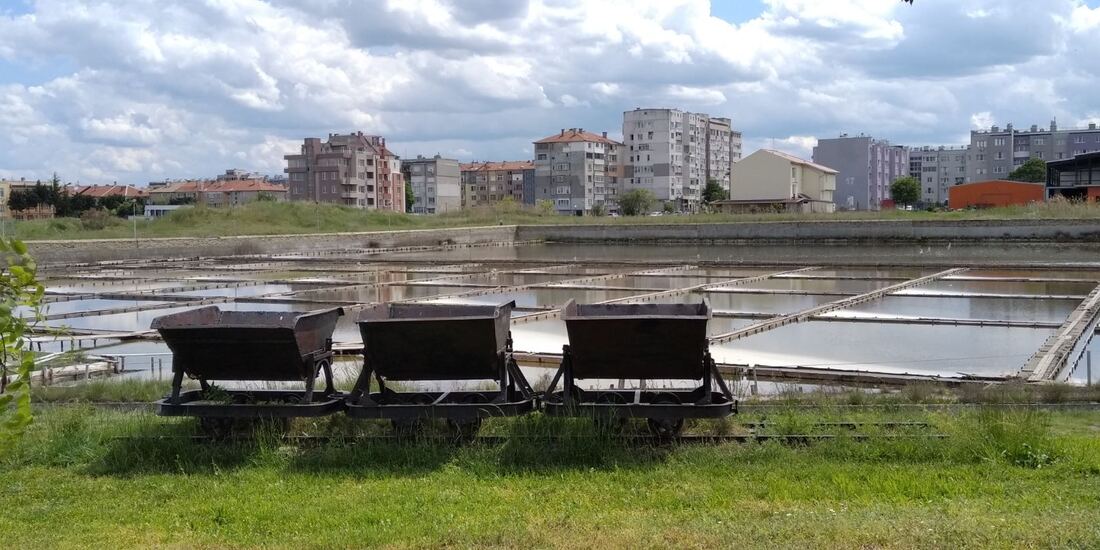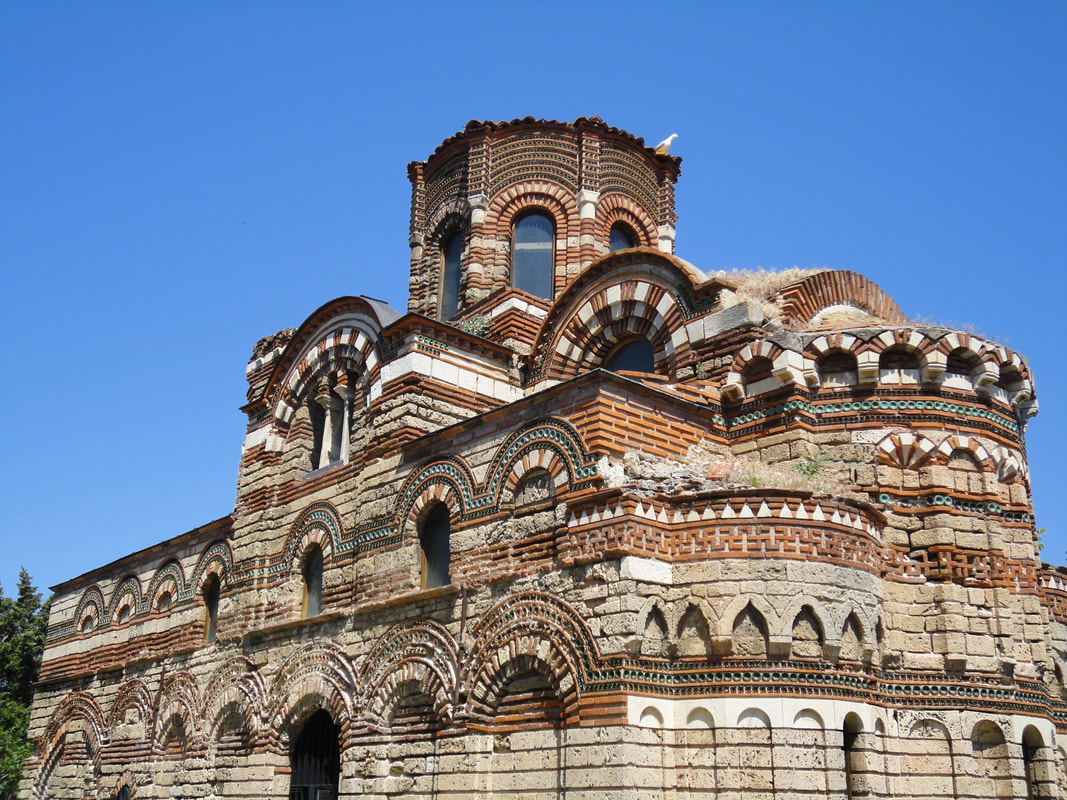|
0 Comments
 Our first post-COVID welcome guests from the USA are touring Bulgaria for 16 days! A magnificent tour, with some very unusual stops. One of them is definitely PODA PROTECTED SITE: "Besides the extraordinary bird diversity, Poda shelters the only mixed colony along the Bulgarian Black Sea Coast of the Eurasian Spoonbill, Glossy Ibis, Pygmy Cormorant, Night, Purple, Grey and Squacco Herons and Little Egret. The international importance of Poda is recognised by its designation as an Important Bird Area, Natura 2000 Site and Ramsar Site. BSPB efforts in preserving Poda were acknowledged by the first for Bulgaria National Award of the Henry Ford Conservation Awards and by the Diploma of the Association of the German Tour Operators. Poda Protected Site is one of the very few sites in Europe, where 290 bird species have been recorded at just 1 square kilometer." If you are a bird watching lover, do not miss this place where researchers will make you appreciate and learn the richness of the place. http://bspb.org/poda/en/papoda.html Here is a small glimpse of the Black Sea in the calm of the spring sunset. Obviously, the moment of perfumes in the Valley of the Roses was not missing, visiting one of the distilleries that in this period receive the bags of petals collected in the flowery fields, to extract the precious essence.
 The Palace is the former summer residence of the Romanian Queen Maria Alexandrina Victoria de Edinburg (1875 – 1938). It is situated approximately 2 km south-west of Balchik in a beautiful locality between the Balchik rocks and the sea. The Palace is a designated archeological and constructional monument of culture and a monument of the gardening and landscape art, declared by Statute No 09-128 of the Ministry of Culture dated 18 April 2002. Just next to the terraces is formed beautiful waterfall, high 25meters. Another smaller waterfall lours from “Allah's garden” through thick wall to three-flow fountaininto deep stone pool. During the Second Balkan War (1913) the Romanian army occupied a part of Dobrudzha and the town of Balchik fell within the borders of Romania. Romanian intellectuals had appraised the beautiful landscape in the region and during the 1920s many prominent Romanian aristocrats and people of art purchased properties here. Queen Maria was brought by her friends to Balchik, and she was fascinated by the landscape and the spirit of the town. She decided to build her own summer residence here, and had a strict requirement for the designers so that the construction of the villa does not harm the natural environment, but rather complements its beauty.  The residence was constructed by the Italian architects Amerigo and Augustino in 1924. It is formed with beautiful threshold terraces along the steep sea shore, through which the water from two springs flows along special stone channels and pours into water mirrors and waterfalls. The style of the new buildings is in unison with that of the found one, and the old mills were restored. The contrast of the white rocks and the red roofs which is typical for the town was preserved. Chapels, yards, fountains and buildings in various styles were built – in typical Bulgarian, Byzantine, Roman and Arabic, Mauritanian, Transylvanian, etc. The park along the sea shore was developed by the Swiss gardener Jules Gianni. The strip is 60-70 meters wide and more than 400 meters long. Christian and Muslim symbols intertwine in wells and gardens, and the flowers and the decorative pots for the gardens were bought from various parts of the world. The complex is composed of a few villas and buildings with characteristic emanation. The Blue Arrow villa was built in 1931 on the edge of a cliff, above the sea shore. The following people had lived in the house during various times – Prince Nikolay – the second son of Queen Maria, and Princess Ileana – her youngest daughter. Now a gallery and a wine degustation room are situated. A statue of St. Martin – a patron of the Roman royal family, can be found next to the administrative building in the complex, on top of a stone column. A beautiful waterfall with 25 meters of height from the fall is found in close proximity to the terraces. Another smaller waterfall comes from the “Garden of Allah” through a thick wall along a three-flow fountain in a deep stone basin.  The city of Varna is situated in the North-Eastern part of Bulgaria, on the Black Sea shore. Varna is the third largest city in Bulgaria and the largest one on the Black Sea shore with population of about 330 000 people. Because of its history and its economical and cultural significance, it is often called the Sea Capital of Bulgaria. The average January temperature in Varna is +1.7 °С, the average July temperature is +22.8 °С, and the average annual temperature is +12.2 ° С, which makes it very appropriate for holiday sea tourism during the warm months of the year. The town was established in the 6th century BC under the name of Odessos by emigrants from the town of Milet in Asia Minor. For a short time it turned into a polis and one of the most important ports and commercial centers on the Black Sea..  For a few decades Odessos was within the borders of the Macedonian Empire of Alexander the Great, but later it reestablished its independence and again rose as an economical, commercial and cultural center. The city was coining its own money which is an evidence of its development. In the 15th year AD Odessos was included within the borders of the Roman Empire. In 1201 the Bulgarian tsar Kaloyan (born 1168– died 1207) integrated the town to Bulgaria, and in 1366 Varna was given to the Dobrudzha ruler Dobrotitsa, and it had served as his capital. In 1398 Varna was conquered by the Ottoman conquerors. During the Revival (18th – 19th century) it was developed as a cultural and commercial center. Today Varna is a modern city with a rich cultural calendar. Two of the most modern multifunctional halls in the county are situated here – the Palace of Culture and Sports and the Festival and Congress Center, which allow the conducting of multiple international cinema festivals, scientific forums and sport events, among which are the following: International Theater Festival “Varna Summer”, Ethnic Festival, International Jazz Festival “Varna Summer”, International Folklore Festival of Varna, International Film Festival “Love is Folly”, International Festival of Puppet Art “Golden Dolphin”, International Photographic Saloon, Bulgarian Film Festival “Golden Rose”, etc. With its modern port, railway connection and international airport providing connection with 35 states and more than 100 world cities, Varna is one of the largest transport centers in Bulgaria. The strategic position of Varna on the map of south-eastern Europe has turned the city into one of the largest settlements on the Black Sea shore since antiquity. Multiple monuments presented today in the city Archaeological Museum date back to this period. The museum’s impressive collection includes the finds from the Varna chalcolythic necropolis – the oldest golden treasure in the world found by now, dating back to six thousand years ago. Among the rest of the museums, some of the most interesting ones are the Maritime Museum and the Ethnographic Museum. The Maritime Museum collection includes articles related to the Bulgarian military and commercial shipping. The Ethnographic Museum presents the rich diversity of culture and the style of life of the population in Varna region from the second half of the 19th and the beginning of the 20th century. As a cultural center, Varna has built one of the largest and richest fine arts galleries in Bulgaria. An exposition of icons painted in the Age of Revival, are kept in the church St. Atanasius, built in the 18th century, and one of the most interesting historical landmarks of the town – the Roman Baths – the largest Roman bath on the Balkan Peninsula with an area of 7000 square meters, is situated in close proximity to it. It is the forth in size in Europe, after the baths of Karakala and Diocletian in Rome and in Trevira (Trier, Germany). It was used until the end of the 3rd century. Another tourist site which deserves attention is the Aquarium. It is a center for popularizing the Black Sea flora and fauna. It presents the first and only biological exposition in the country. In the Dolphinarium, situated in the Park by the Sea, the tourists can enjoy a unique dolphin show, presented in an interesting way by the dolphins and their trainers. It is conducted in four languages simultaneously: Bulgarian, Russian, German and English, and includes multiple attractions, such as acrobatics, balancing, music, singing, dancing, and games with the audience. Its duration is 40 minutes. The Ecological Park of the University Botanical Garden is situated close to Varna, in the holiday resort of St. Konstantin and Elena. This is the first ecological park in the country which combines artificial and natural ecological systems. The park is situated on an area of 360 dca. The plant collections include more than 300 species of exotic trees and bushes, and the herbaceous plants are more than 100 species. The ecological park offers exotic encounters with plants from around the world: sea pine, tulip tree, ginkgo biloba, sterculia, parrotia persica, broussonetia papyrifera, evergreen oak, mamont three, etc. More than 30 rose species are cultivated in the Rosery. Another tourist site which must be visited is situated at a distance of about 14 km from Varna, on the road to the resort Zlatni Pyasatsi. This is Aladzha Monastery – one of the few rock monasteries in Bulgaria, in which the individual premises with different functions can be differentiated. The rock monastery is situated in the central part of the Natural Park Zlatni Pyasatsi – a protected territory with rare tree species. The beautiful nature around, in combination with the historical and Christian landmarks makes it a wonderful place for cultural, worship and ecological tourism. From 2009 a unique audio-visual performance entitled Legends of Aladzha Monastery is presented in Aladzha Monastery. It is a new tourist attraction for the guests of Varna and the Black Sea region. The day of Varna is celebrated on the day of The Assumption of the Holy Mother – 15 August. The city offers practically indefinite possibilities for accommodation. The hotels are numerous and diverse in categories and prices. Accommodation is also possible in the nearby resorts – Zlatni Pyasatsi, St. Konstantin and Elena and Riviera. There are a few accommodation bureaus in the city which are related to one another with an updated information transfer. The options for catering and entertainment are also rich – seashore restaurants, pizzerias, snack bars, beer-houses, catering and fast food establishments, clubs and discotheques. Make good use of the fact that there are multiple restaurants in the town, offering a diverse variety of sea food. The sea garden of Varna offers multiple entertainment options – there is an amphitheater, an astronomical complex, an observatory, a planetarium and a tower on its territory, as well as multiple entertainment platforms and a small rowing channel for children, a pool for water wheels and a zoo. The summer theater is a center of multiple events, as the most significant of them are the Varna Music Days, the world-famous International Ballet Contest and the Days of Varna Summer – triennial of arts. The central sea baths and the beach are situated below the Sea Garden. They were constructed in the beginning of the 20th century and include policlinic, water and mud-curing complex, two quays, a few restaurants and discotheques. Various water sports can be practiced on the beach – beach volleyball, surfing, diving, jet skiing, boat trips, banana boat rides, etc. Varna is a city which is very appropriate for health tourism. It successfully combines resting at the sea side with healing camps, pre-hospital and hospital treatment, recreational services and healthy way of life. A training golf course is situated in close proximity to Varna, in Asparuhovo residential section, and other 3 large and modern golf courses are also situated not far from the city, by Kavarna and Balchik. The cathedral in Varna is one of the symbols of the city. It is situated on “St. Cyril and St. Methodius” square in the center of Varna. The view from the belfry towards the city is splendid, but you have to overcome the 133 stairs of the narrow caracol. The first stone upon the construction of the temple was placed by Prince Alexander I of Battenberg (1857 - 1893) in 1880. After the consecration, the prince reprieved all the prisoners from the Varna prison, for which three months of their sentences were remaining. The name that was chosen, The Assumption of Holy Mother, was to the memory of the Russian Empress Maria Alexanrovna, benefactor of Bulgaria and aunt of the Prince. The foundations were laid by the project of the Odessus architect Maas, and the building itself is constructed according to the project of the municipal architect P. Kupka. The financing of the construction was relied on mainly by the donors. Additionally, a lottery with 150 000 tickets of BGN 2 each was conducted, as the tickets were sold in the country and abroad. During the construction itself, the builders were working according to the model of the Peterhof Temple in Saint Petersburg, by using local materials. The roof part and the domes were covered in copper tin. The construction of the temple was performed in the beginning of October 1885. The complete decoration of the temple began in 1949, and in the 1960s the stained glass of the large windows looking to the square were made. During the period 1999-2002 the ventilation system in the temple was constructed, and the mural paintings were renovated, and in 2001 by funds of the municipality a unique outdoor lighting was installed at the Cathedral, which emphasizes the beauty of the building at night. In 2002 the renovation of the Cathedral domes was completed. The entire roof construction is enriched with materials based on gold and silver. |
Archives
April 2023
Categories
All
|


































 RSS Feed
RSS Feed


